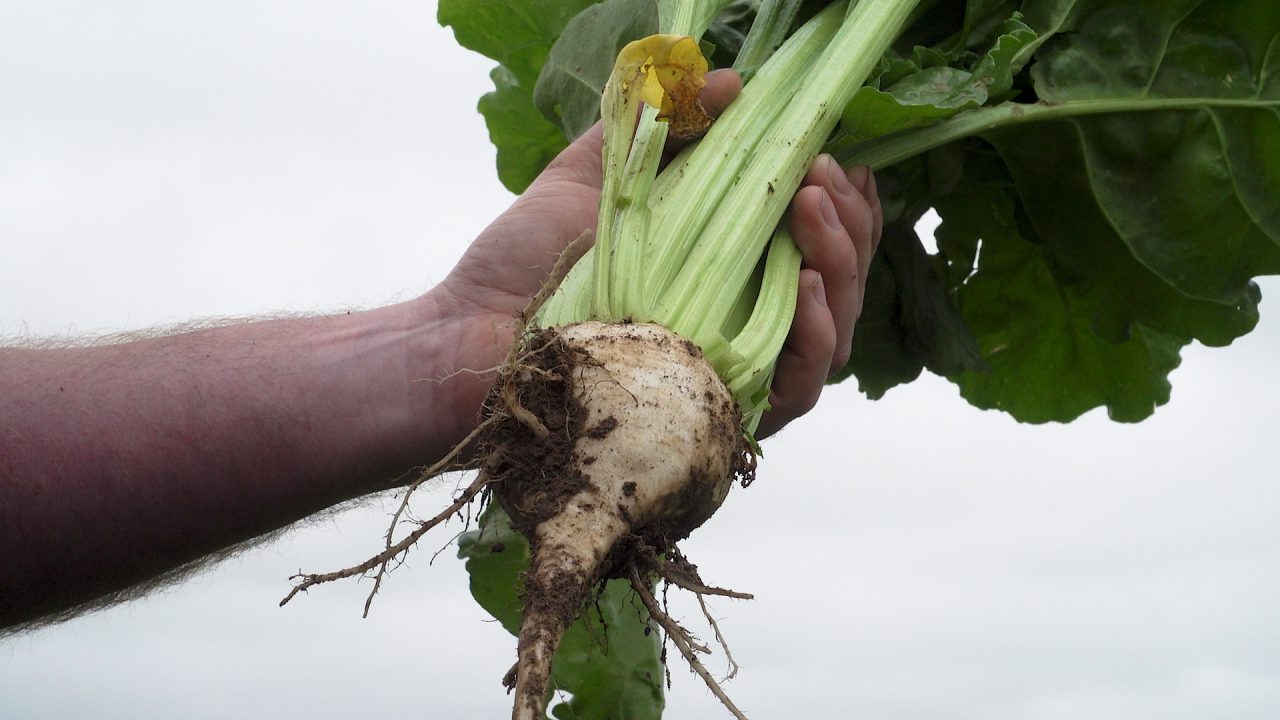Teagasc is confirming that 2023 will be a good year for Irish fodder beet growers. This is assuming that they can get the harvest over the line.
While it is still early in the season for harvesting fodder beet, early indications are that this year’s 9,300ha crop is yielding very well.
“Poor ground conditions are inhibiting harvesting; but growers are managing to get enough harvested in order to satisfy customers, before the big demand comes in the next few weeks,” said Ciaran Collins, Teagasc tillage specialist.
Early reports suggest that yields of untarred fodder beet are in the mid 30t/ac from crops that were sown in April.
“The weather pattern in 2023 has been excellent for April-sown beet. Establishment was good, and while rainfall in May and June was below average, there was enough moisture in the soil to allow good growth in these critical months for fodder beet development.
“Above average temperatures in both May and June, and above average sunshine hours in June, are significant contributory factors in the good yield this year.
“However, yield in some later sown crops will be poorer. Later sown crops in May were caught by drier weather and are gappy with poorer weed control in some cases,” Collins added.
Foliar disease
Cercospora leaf spot has overtaken rust and ramularia leaf spot as the predominant foliar disease of beet in 2023.
Cercospora appears as small (2 – 3 mm) grey spots with reddish margins, and its development is favoured by high temperatures and high humidity that persisted this autumn.
There are significant differences in varietal susceptibility to cercospora, and growers with belt harvesters would be advised to prioritise affected crops for harvesting, before further leaf deterioration occurs.
Positive news
Fungicides have been very effective in slowing down disease progression and there appears to be a significant benefit to two fungicides over one application in terms of canopy health this year.
Forage maize is turning out to be the second good news story for the tillage sector this year.
April-sown crops have more than delivered for the same reasons identified with beet.
Damp conditions at planting, followed by a spell of hot weather, delivered all of the moisture and heat that maize seedlings needed.
